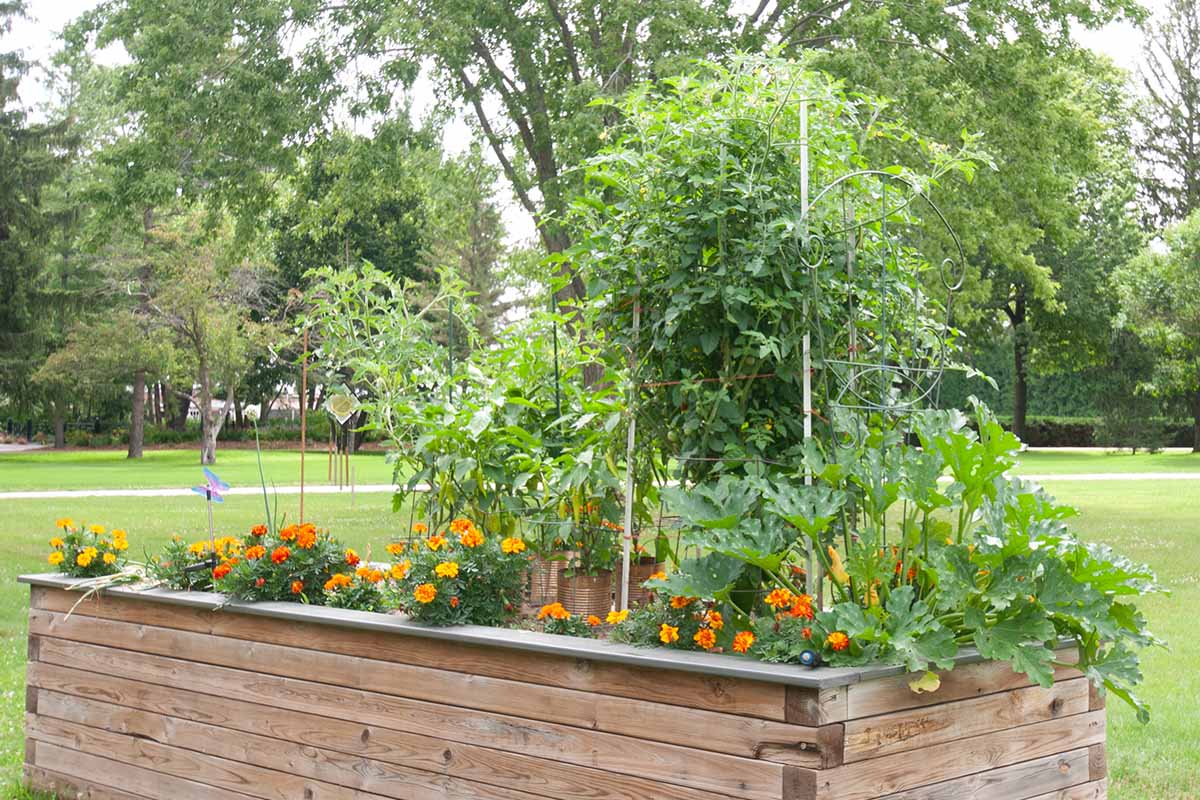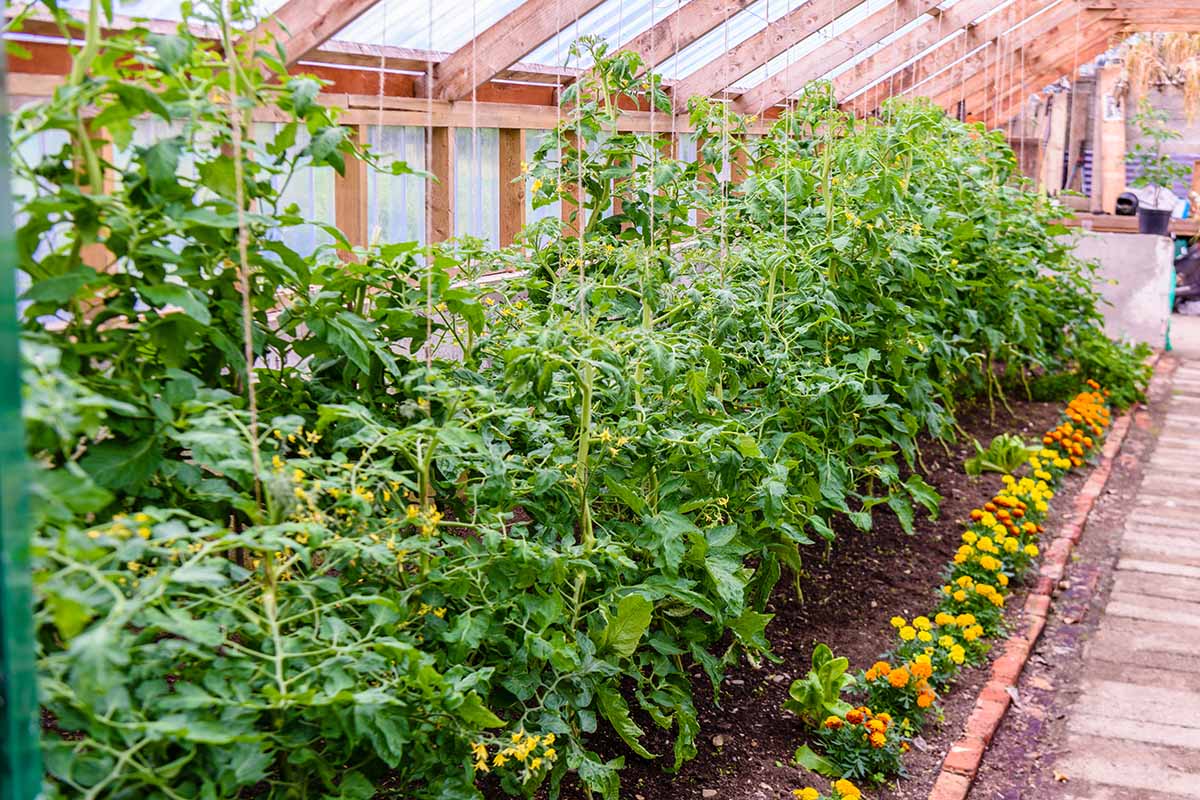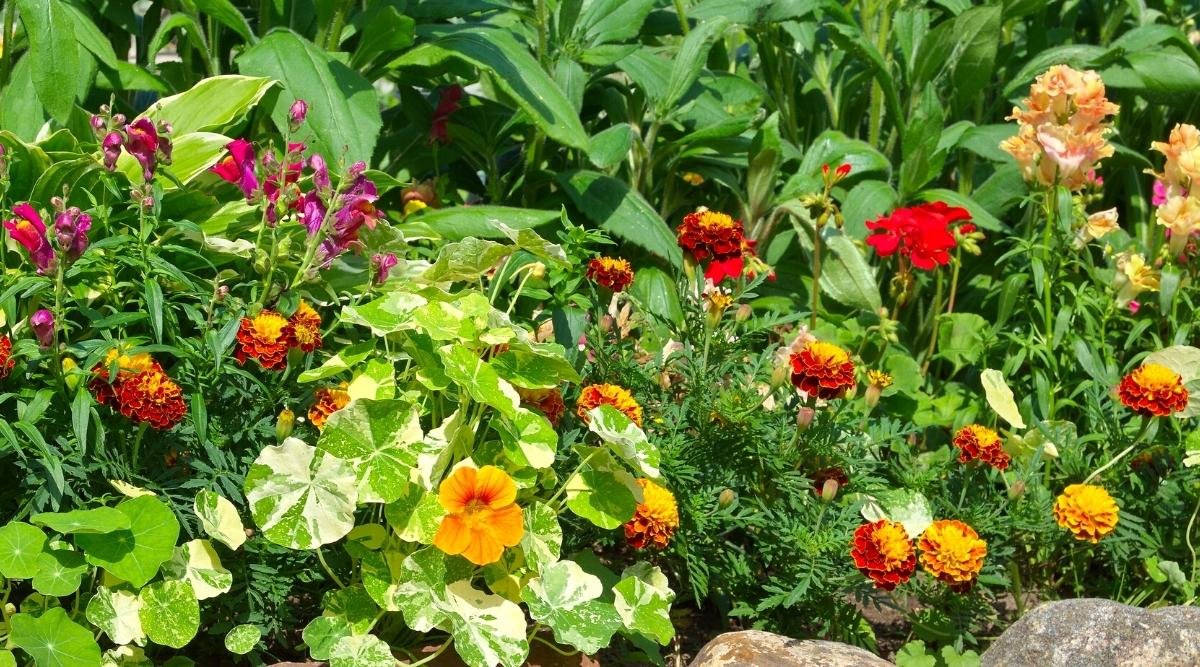Can You Plant Marigolds With Garden Grown Tomatoes?
A Complete Guide to Companion Planting Marigolds and Tomatoes for a Thriving Garden
Tomatoes are one of the most popular and rewarding crops for home gardeners. If you’re growing tomatoes, you’ve likely heard about planting marigolds alongside them. But can marigolds really benefit your tomato plants? How should you plant them together for the best results? This guide answers those questions and more.
We’ll explore the benefits of planting marigolds with tomatoes, share detailed planting and care advice, cover advanced companion gardening strategies, and answer common questions in a section.

Why Plant Marigolds With Tomatoes?
1. Natural Pest Control
Marigolds are famous for their pest-repelling properties. They emit compounds such as thiophenes that deter harmful garden pests including:
- Tomato hornworms
- Aphids
- Whiteflies
- Nematodes (root-knot nematodes)
- Beetles and other common tomato pests
By planting marigolds near tomatoes, you can reduce the pest population naturally, which lowers the need for chemical pesticides.
2. Attract Beneficial Insects
Marigolds attract pollinators like bees and butterflies, essential for fruit set in tomatoes. They also bring in predatory insects such as ladybugs, lacewings, and parasitic wasps that feed on pest insects.
3. Improved Soil Health
Certain marigold varieties release biofumigant compounds that suppress nematodes and other harmful soil pathogens, helping maintain healthier tomato roots.
4. Visual and Aromatic Appeal
Marigolds add bright color and a pleasant scent to your tomato beds, enhancing the garden’s overall aesthetics and sensory experience.
Understanding the Growing Requirements of Tomatoes and Marigolds
Tomatoes
- Sunlight: Full sun (6-8 hours daily)
- Soil: Well-draining, fertile soil rich in organic matter, pH 6.0-6.8
- Water: Consistent deep watering; avoid wetting foliage
- Spacing: 18-36 inches apart depending on variety
- Temperature: Warm, 70°F-85°F (21°C-29°C)
Marigolds
- Sunlight: Full sun (6-8 hours daily)
- Soil: Adaptable; well-draining soil with moderate fertility, pH 6.0-7.0
- Water: Moderate watering; allow soil to dry between waterings
- Spacing: 8-12 inches apart (French marigolds preferred for companion planting)
- Temperature: Warm, tolerate heat well
How to Plant Marigolds With Tomatoes: Step-by-Step Guide

Step 1: Select Marigold Variety
For best results, choose French marigolds (Tagetes patula) due to their compact size and strong pest-repelling ability. Avoid tall African marigolds which may shade tomato plants.
Step 2: Prepare the Soil
- Clear weeds and loosen soil 8-10 inches deep.
- Incorporate compost or aged manure for fertility and texture.
- Test pH and adjust if needed.
Step 3: Plant Tomatoes
- Start seeds indoors 6-8 weeks before the last frost or buy seedlings.
- Transplant outdoors when soil and air temperatures are warm.
- Space plants 18-36 inches apart depending on growth habit (indeterminate vs determinate).
Step 4: Plant Marigolds
- Space marigolds 8-12 inches apart around tomato plants, focusing on the edges and between rows to maximize pest deterrence.
- You can also plant marigolds in containers placed near tomatoes for additional protection.
Step 5: Water and Mulch
- Water tomatoes deeply at the base to prevent fungal diseases.
- Water marigolds moderately, letting soil dry slightly between waterings.
- Apply mulch around both plants to conserve moisture and suppress weeds.
Advanced Tips for Growing Tomatoes and Marigolds Together
:max_bytes(150000):strip_icc()/GettyImages-1453800838-41fd13e9ce224058bc73177dc1a49f76.jpg)
1. Timing Is Key
Plant marigolds at the same time or slightly before tomatoes to establish their pest-repelling presence early.
2. Use Marigolds as a Trap Crop
Plant marigolds around the perimeter of your tomato garden or in strips to attract pests away from your tomatoes.
3. Crop Rotation
Rotate tomatoes and marigolds yearly to reduce buildup of soil pests and diseases.
4. Avoid Overcrowding
Ensure good airflow by spacing plants properly to minimize fungal disease risk. Marigolds should not shade tomato foliage.
5. Monitor for Pest Pressure
While marigolds help, regularly inspect plants for aphids, hornworms, and other pests. Use organic controls like neem oil or beneficial insects when necessary.
6. Fertilization
Tomatoes are heavy feeders. Use a balanced fertilizer and avoid excessive nitrogen to encourage fruit over foliage. Marigolds require less fertilizer; too much nitrogen causes lush growth but fewer flowers.
Common Problems and Solutions When Growing Marigolds and Tomatoes Togethe
| Problem | Cause | Solution |
|---|---|---|
| Aphids on tomato plants | Pest infestation | Use insecticidal soap; encourage ladybugs |
| Tomato hornworms | Caterpillar feeding | Handpick larvae; use Bacillus thuringiensis |
| Powdery mildew or blight | Poor airflow, wet foliage | Improve spacing; water at base; remove infected leaves |
| Yellowing tomato leaves | Nutrient deficiency or disease | Test soil; fertilize properly; check drainage |
| Marigolds overshadowing tomatoes | Overcrowding or tall varieties | Choose French marigolds; maintain spacing |
Table of Contents
Comprehensive FAQ: Marigolds and Tomatoes Companion Planting
Can marigolds protect tomatoes from pests?
Yes, marigolds emit natural compounds that repel nematodes, aphids, whiteflies, and tomato hornworms, reducing pest pressure on tomatoes.
What marigold variety is best with tomatoes?
French marigolds (Tagetes patula) are preferred for their compact size and strong pest-repellent qualities.
How close should I plant marigolds to tomato plants?
Space marigolds about 8-12 inches away from tomato plants to maximize pest control without overcrowding.
Can I plant marigolds and tomatoes in the same container?
Yes, if the container is large enough (at least 12-16 inches deep) and plants have enough room to grow without competition.
Do marigolds attract beneficial insects for tomatoes?
Absolutely. Marigolds attract pollinators like bees and predatory insects like ladybugs, helping improve tomato pollination and natural pest control.
Will marigolds compete with tomatoes for nutrients?
With proper spacing and fertile soil, marigolds and tomatoes do not compete significantly.
How often should I water marigolds and tomatoes
Water tomatoes deeply and consistently at the base 1-2 times per week. Marigolds prefer moderate watering and slightly drier conditions between watering.
Can marigolds prevent soil-borne diseases in tomatoes?
Certain marigolds can suppress root-knot nematodes and soil pathogens, improving soil health for tomatoes.
When should I plant marigolds relative to tomatoes?
:strip_icc()/BHG-Marigold-Companion-Plants-170816-156-47036b1e2ac54a39a08551c07b6307d0.jpg)
Plant marigolds simultaneously with or slightly before tomato transplants to establish pest protection early.
Are there any tomato varieties that don’t do well with marigolds?
No specific tomato varieties are incompatible with marigolds, but always monitor for signs of stress and adjust spacing if necessary.
Can marigolds attract pests harmful to tomatoes?
Generally, marigolds repel most tomato pests. Occasionally, spider mites may be attracted if plants are stressed, but good care minimizes this risk.
Can marigolds grow in partial shade near tomatoes?
Marigolds and tomatoes both prefer full sun for best growth and pest protection.
How long do marigolds bloom when planted with tomatoes?
With regular deadheading, marigolds can bloom continuously throughout the tomato growing season.
Final Thoughts
Planting marigolds with garden-grown tomatoes is a time-tested companion planting strategy that can significantly reduce pest problems and improve tomato health and yields. By understanding their complementary growing requirements, practicing proper spacing, and employing advanced gardening techniques such as crop rotation and trap cropping, you create a natural, chemical-free defense for your tomatoes.
Whether you have a small container garden or a large vegetable patch, incorporating marigolds alongside tomatoes adds both beauty and function. Their bright blooms attract pollinators and beneficial insects, while their natural pest-repellent chemicals protect your plants.

